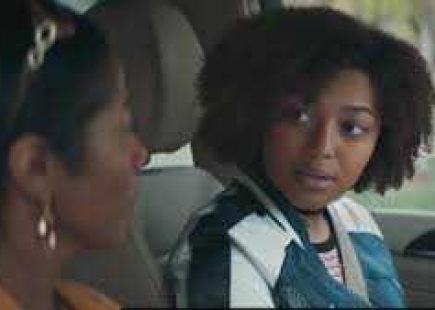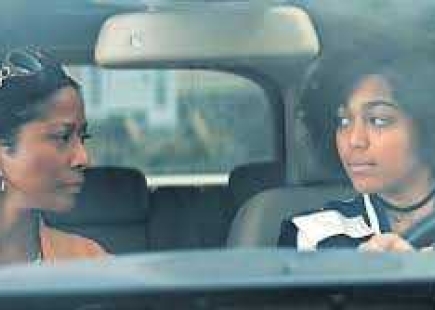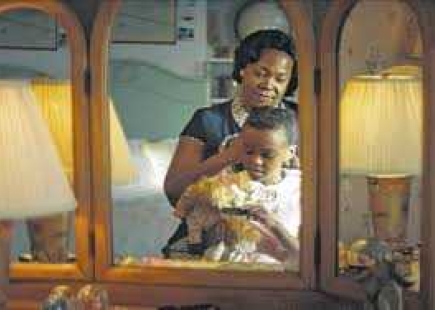How P&G's My Black is Beautiful campaign started a conversation about "The Talk"

The Background
Following Cannes Week, I thought I’d take a pause to reflect on a campaign that was not only tipped to win this year, but one that addresses an uncomfortable and tragic truth.
Proctor & Gamble, along with BBDO New York, aimed to revive the ‘My Black is Beautiful’ campaign that started in 2006 by a group of visionary black women at P&G.
It originally formed with the aim of sparking a broader dialogue about black beauty, however, in this revival, themes of cultural identity and racial bias are explored.
The Big Idea
The relaunch started with a spot called ‘The Talk’.
It painfully showcases black mothers, through the decades, having conversations with their children; preparing them for a world that will treat them differently. Worse. All because of their skin colour.
It opens on a mother plaiting her young daughter’s hair asking, “Who said that?”, the daughter replies, “The lady at the store”. The mother pauses and then says, “That is not a compliment”.
We have no idea what she is referring to, but, there is no anger in her voice. Her response is delivered in a silently strong and dignified way, making it all-the-more tear-jerking when the ‘non-compliment’ is revealed at the end of the spot.
The mother looks at her daughter before delivering a powerful message: “You are not pretty 'for a black girl’. You are beautiful, period.”.
The film concludes with a message urging people to talk about “the talk” so that we can end the need to have it.



The Review
P&G and BBDO worked alongside minority-certified consulting firm, Egami Consulting Group, to develop the creative. The scenarios in the film were all based on real experiences of bias that came out in creative workshop sessions, and the film was made even more powerful by the conscious decision not to show any of the company’s products.
Working with ABC’s sitcom, Black-ish, the spot was first featured in a commercial break. It happened during an episode that had “the talk” as a plot line for that episode, adding even greater impact. The show was the perfect fit for the debut, having a successful history of taking on real-life issues and addressing them in relatable ways for a US audience.
In the months following, P&G hosted conversations with community leaders and professional bodies, such as the Greater Cincinnati Association of Black Journalists, around the topic.
Leading into Black History Month, P&G launched additional initiatives aimed to encourage listening and dialogue about bias. This included the release of podcast integrations about “The Talk”, original content from cultural commentator Michaela Angela Davis and a downloadable discussion and action guide helping parents, educators and others facilitate constructive dialogue about bias.
In Hindsight
What I absolutely love about this campaign is that at no point do we sense a tone of blame or do we see the characters as victims.
What it does do is shed light on a very personal and heart-breaking moment between mother and child that those from different racial backgrounds have never had to experience.
What it does show is a universal truth that we can all relate to: a mother’s love for her child and how she will always be there to pick you back up and cheer you on when the world has been nasty and unfair.
By getting the messaging and emotion just right, the campaign encourages curiousness and consideration.
Other campaigns that have tried to combat discrimination and bias in the past with a more direct approach have contrarily caused audiences to shut down.
This is because as humans, we all believe we are good people. And when we feel attacked or accused of something that makes us feel bad, we choose to ignore it or get angry. As with most of our biases, half the time we do not even know that they are there and when we finally see them (if we ever do), it is not always easy to accept.
I had a moist eye after watching this film, I even made all of my friends watch it and then we discussed the topic at length over a few glasses of wine. The problem is, how do you keep the momentum going on such an important topic?
Unfortunately, prime-time two-minute original spots aren’t possible on a weekly basis. How do you keep conversation open, flowing and moving forward? How do you continually remind people to keep their biases in check (when they probably think they don’t have a bias in the first place) and change behaviour for the long-term?
I don’t know if this campaign has the answer, but I can’t wait to see where it might go next.
If you enjoyed this article, you can subscribe for free to our weekly email alert and receive a regular curation of the best creative campaigns by creatives themselves.
Published on:


